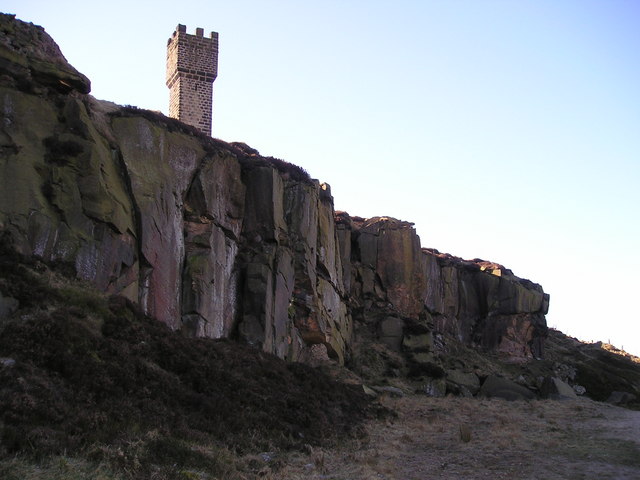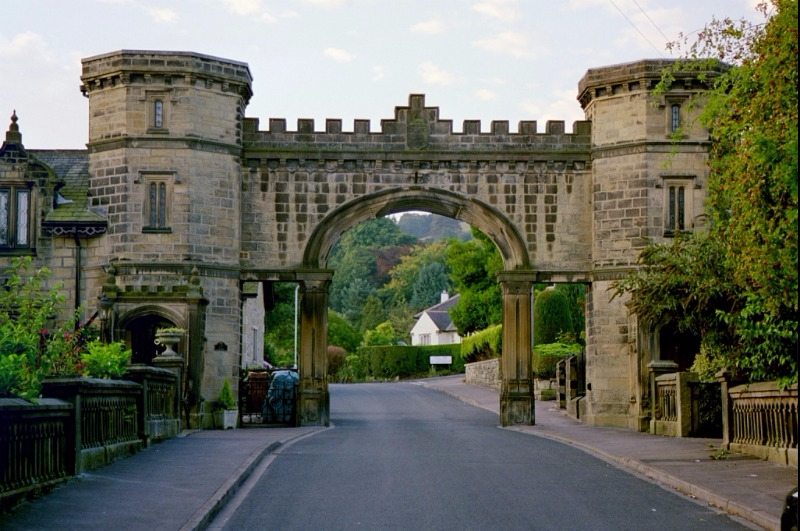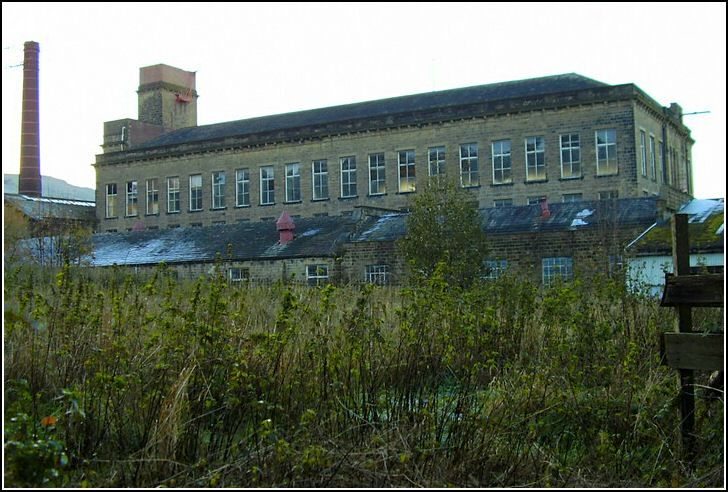History of Buildings

Sutton Pinnacle / Lund's Tower is nearest Sutton. The site was chosen by James Lund of nearby Malsis Hall as the site for the construction of a monument, possibly to commemorate the Golden Jubilee of Queen Victoria in 1887.
He built a single tower containing a spiral staircase which has become popularly known as Sutton Pinnacle.
The tower is 36 feet high (11m), ground to the top of the battlements. The base is 8 feet square (3.45m) from which the tower tapers very slightly to a protruding course of stonework at a height of 9 feet (2.75m) The tower then rises another 15 feet (4.570m) to a 'running' corbel that supports the parapet, which is 12 feet high (3.650m). The parapet itself is 9 feet square (2.75m)
Wainman's Tower / Cowling Pinnacle is nearest Cowling, an older tapering solid structure.
There are a number of possible suggestions as to its existence - a memorial to Lady Amcott's husband, who died in the Civil War; erected by Richard Wainman to mark the defeat of Napoleon at the battle of Waterloo in 1815; or a memorial to his son, who died in the Napoleonic War.
By the latter part of the 19th century the pinnacle had become severely damaged by lightning, as a result of which it was demolished and rebuilt in January 1900 by Messrs. Gott and Riddiough of Cowling.
Sutton Hall - a magnificent Victorian Gothic building, was demolished in the 1940's. All that remains is an imposing stone archway, "The East Lodge", The Lodge, West Lane, bridges and stables converted to a residence.
John William Hartley built Sutton Hall in 1894 at a reputed cost of £40,000. On his death in 1909, the estate and Greenroyd Mill (founded in 1830 by Peter Hartley) were left to a cousin Miss Emma Hartley who because of depression and unemployment sold the mill in 1911 and left the estate to Ernest Hartley on her death in 1930.


Ernest Hartley died in 1932 and left Sutton Hall and the estate to his eldest son George Clifford Hartley. George Clifford Hartley sold it to a Keighley builder Ernest Turner in 1933. In 1934 Ernest Turner donated six and half acres, part of Sutton Hall Estate and adjoining Sutton Clough to the Parish Council for the benefit of the public. The front garden of West Lodge was sold off and Sutton Hall separated into five dwellings.
The Lodges were Grade II Listed in September 1954.

One of the oldest mills in Sutton stood on the bank of the stream at the bottom of Sutton Clough, the remains of the two dams adjacent to the mill are still visible. An indenture dated 1815 describes the factory as a cotton mill occupied by Peter Hartley. In the 1831 Census numerous cotton weavers are mentioned.
By 1830 John Hartley was trading as a clothier, ten years later he was renting a small mill on the site of the present factory. By 1850 he had died, and his son William aged twenty seven was carrying on his fathers business. The factory in Sutton passed to William's son John William.
Meanwhile another mill had begun in Sutton. T & M Bairstows was founded in 1838 by two brothers Thomas and Matthew who gave up their business as corn millers and started a woollen manufacturers using the same premises.
During the first half of the 19th century the firm expanded and celebrated its centenary in 1938.
Hartleys Mill was sold to James Bairstow in 1911. The parent company closed in 1970 and was taken over by Silentnight Holdings Ltd
Silentnight Holdings Ltd ceased in Sutton in 1994. A nursing home and houses now reside on the site.
Hartleys Mill (Greenroyd Mill) is also being developed as a residential site.